In late-2024, Dwarflab released the Dwarf 3 to replace the Dwarf 2:
Dwarf 3 vs Dwarf 2: Key Points
- The Dwarf 3 is the same small size and light weight as the Dwarf 2 – retaining one of the key strengths.
- The Dwarf 3 has a larger aperture of 35mm, versus 24mm for the Dwarf 2. This will increase its light gathering capacity.
- The Dwarf 3 also has a longer focal length of 150mm, versus 100mm for the Dwarf 2. This means a very slightly narrower field of view.
- The camera resolution is the same (8.3 MP) in both models. However the Dwarf 3 has an improved sensor (the same as used in the ZWO ASI678MC camera) with a larger pixel size of 2μm, versus 1.45μm for the Dwarf 2.
- The mount will be capable of an equatorial mode that will avoid field rotation and enable longer exposure times. This was only possible on the Dwarf 2 with some slightly awkward hacks.
- It will have a Mosaic Mode for stiching together wider images. This is one of the features most loved on Vaonis’s smart telescopes.
- Other improvements include an increased storage capacity (and does not require an external SD card), improved battery life (although it is no longer removable like on the Dwarf 2), and increased WiFi range.
- It costs $499 which is barely more than the Dwarf 2’s starting price.
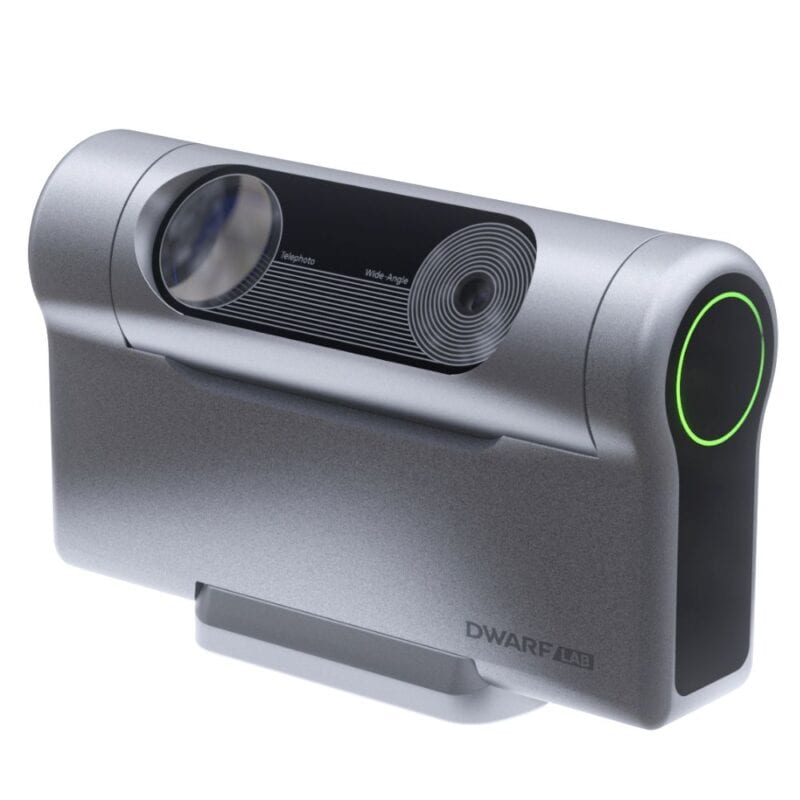
Dwarf 3 Overview
This is how the Dwarf 3 improves on the Dwarf 2:
- Wider Aperture: While maintaining the classic and lightweight design of a refractor, the telephoto lens aperture has been expanded to 35mm, increasing the light intake by 116% compared to the previous generation. Get ready for a deeper, clearer observation of the universe.
- Sensor Upgrade: Equipped with the powerful Sony IMX678 Starvis 2, featuring a pixel size to 2 µm, an enhancement of 90.24% than before. Enjoy longer exposure times and high signal-to-noise ratio, ensuring every image is clear and vibrant.
- Lens innovation: Utilizes multiple low-dispersion glass elements to compose an apochromatic lens, meticulously optimized to the diffraction limit, ensuring every star’s detail shines brilliantly.
You can watch this good overview from Astro La Vista:
“I think in a nutshell, less noise, longer exposures, longer battery life, improved motors for better tracking, and I forgot to mention improved optical elements to get it closer to being apochromatic”
Astrolavista
This is another good video with a more in-depth specifications comparison:
“After seeing all the new upgrades for the Dwarf 3 like larger aperture, longer focal length, better optics, a narrow band internal filter, new ND filters, larger battery, and probably the most important a larger and newer sensor, the new Dwarf 3 I think will really make a huge step up compared with the old Dwarf 2 regarding image quality for deep sky astrophotography.”
Galaxy Art Media
Now we can dig into to a side-by-side specs comparison.
Dwarf 3 vs Dwarf 2: Telescope
The Dwarf 2 has a 24 mm (0.9 inch) aperture, 100 mm focal length, f/4.2 focal ratio, and a 3.2° x 1.8° field of view.
The Dwarf 3 has a larger 35 mm (1.4 inch) aperture, a longer 150 mm focal length, a very similar f/4.3 focal ratio, and a slightly narrower 2.9° x 1.7° field of view.
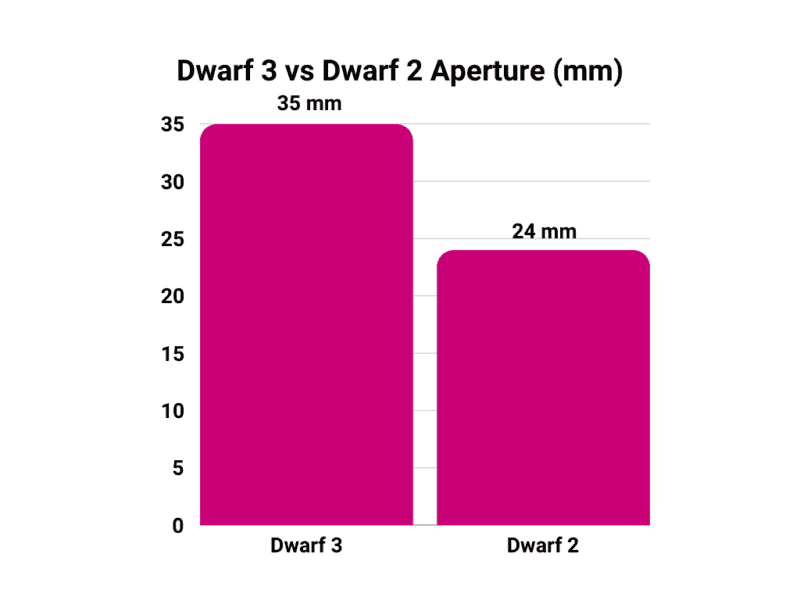
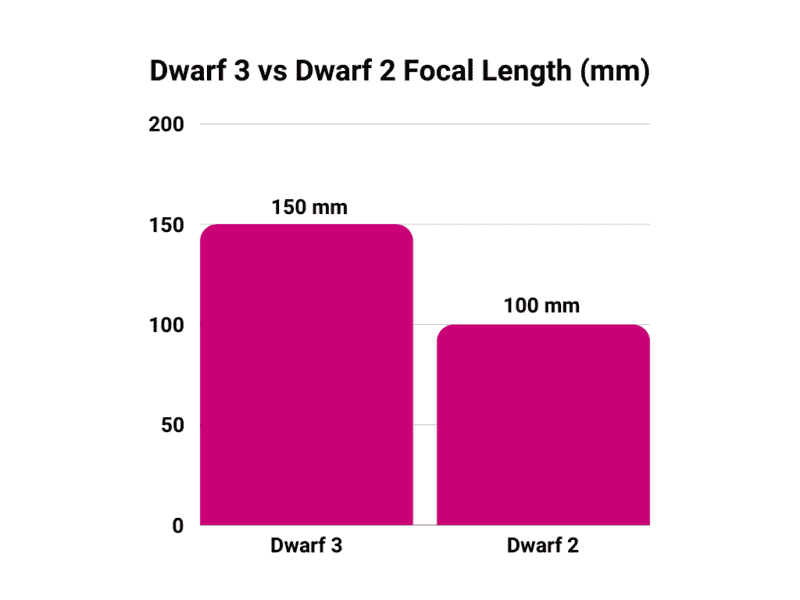
Dwarf 3 vs Dwarf 2: Camera
The Dwarf 2 has an 8.3 MP resolution camera with a sensor size of 3840 x 2160 using a Sony IMX415 sensor and a pixel size of 1.45μm.
The Dwarf 3 has a similar 8.3 MP resolution camera with a sensor size of 3856 x 2180 using a Sony IMX678 Starvis 2 sensor and a larger pixel size of 2 µm.
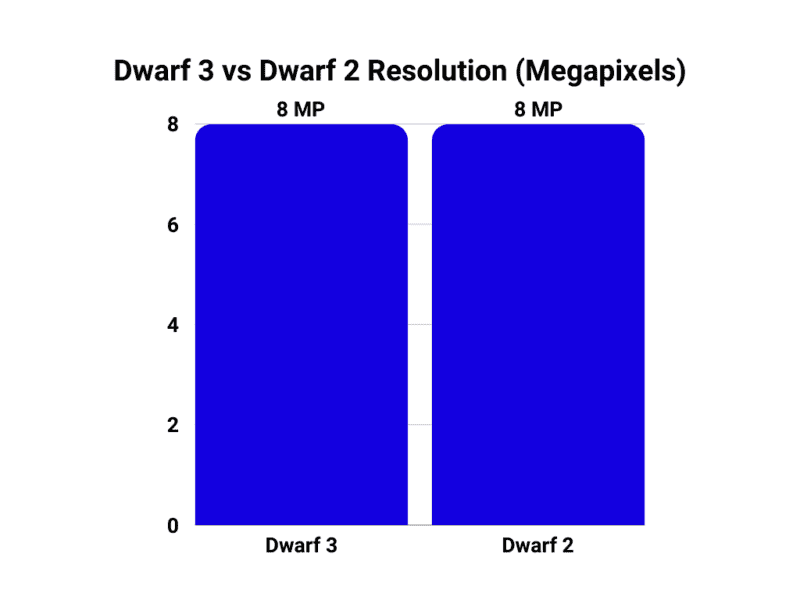
Dwarf 3 vs Dwarf 2: Size and Weight
The Dwarf 2 weighs 1.2 kg (2.6 lb) and has dimensions of 20 x 6 x 13 ((H x W x L in cm).
The Dwarf 3 weighs a tiny bit more at 1.3 kg (2.9 lb) and has the same dimensions of 20 x 6 x 13 ((H x W x L in cm).
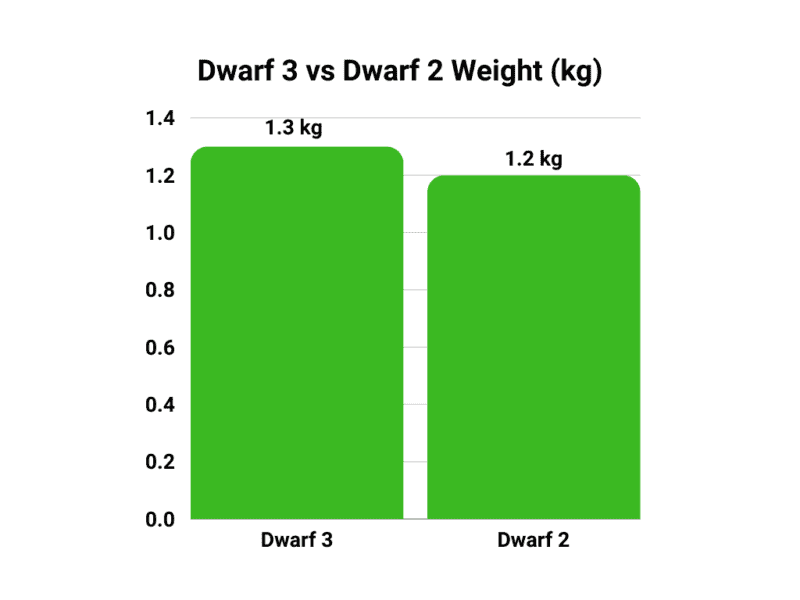
Dwarf 3 vs Dwarf 2: Specifications Table
| Dwarf 2 | Dwarf 3 | |
|---|---|---|
| Year | 2023 | 2024 |
| Aperture | 24 mm (0.9 inch) | 35 mm (1.4 inch) |
| Focal Length | 100 mm | 150 mm |
| Focal Ratio | f/4.2 | f/4.3 |
| Limiting Magnitude | 9.6 | 10.42 |
| OTA type | Refractor | Refractor |
| Eyepiece | No | No |
| Field of View | 3.2° x 1.8° | 2.9° x 1.7° |
| Resolution | 8 MP | 8 MP |
| Sensor Size | 3840 x 2160 | 3856 x 2180 |
| Sensor | Sony IMX415 | Sony IMX678 |
| Pixel Size | 1.45 μm | 2 µm |
| Image Formats | TIFF, FITS | TIFF, FITS |
| Mosaic Mode | No | No |
| Size (H x W x L) cm | 20 x 6 x 13 | 20 x 6 x 13 |
| Weight | 1.2 kg (2.6 lb) | 1.3 kg (2.9 lb) |
| Mount | Included | Included |
| Tripod | Included | Included |
| Battery Life | 3 hrs | TBC (but longer) |
| Internal Storage | 64 GB | 128 GB |
| Dew Control | Built-in | Built-in |
| Retail Price* | $459-$595 | $499 |
Dwarf 3 vs Dwarf 2: Our Verdict
The appeal of the Dwarf 2 was that it was the smallest and most portable smart telescope, as well as being one of the cheapest.
The Dwarf 3 is a subtle upgrade to this, where Dwarflab have tried to retain their key strengths versus other smart telescopes – the size and portability – whilst upgrading to improve imaging performance where they can.
The price means it still remains in the territory of budget smart telescope, in comparison to the premium models from Vaonis and Unistellar.
That’s fine by me and is a big part of the appeal of the Dwarf 2 – that you can get stuck into deep space astrophotography with one simple device and without breaking the bank.
Budget Smart Telescope
- Shoot deep space objects in minutes with no expertise or experience necessary
- Great value at a budget price
- Light and portable - easy to store and travel with
- Limited image quality with relatively low aperture
- Not good for planetary imaging with short focal length
- Slightly fiddly setup and calibration processes
Related content and more information
- Dwarflab website
- Dwarflab Dwarf 3 Preview
- Skies & Scopes Dwarf 2 Review
- Skies & Scopes Smart Telescopes Comparison Guide
Dwarf 2 comparisons:
- Dwarf 2 vs Unistellar eQuinox
- Dwarf 2 vs Unistellar eQuinox 2
- Dwarf 2 vs Unistellar eVscope 2
- Dwarf 2 vs Unistellar Odyssey
- Dwarf 2 vs Unistellar Odyssey Pro
- Dwarf 2 vs ZWO Seestar S50
- Dwarf 2 vs Vaonis Hestia
- Dwarf 2 vs Vaonis Vespera
- Dwarf 2 vs Vaonis Vespera II
- Dwarf 2 vs Vaonis Vespera Pro
- Dwarf 2 vs Celestron Origin


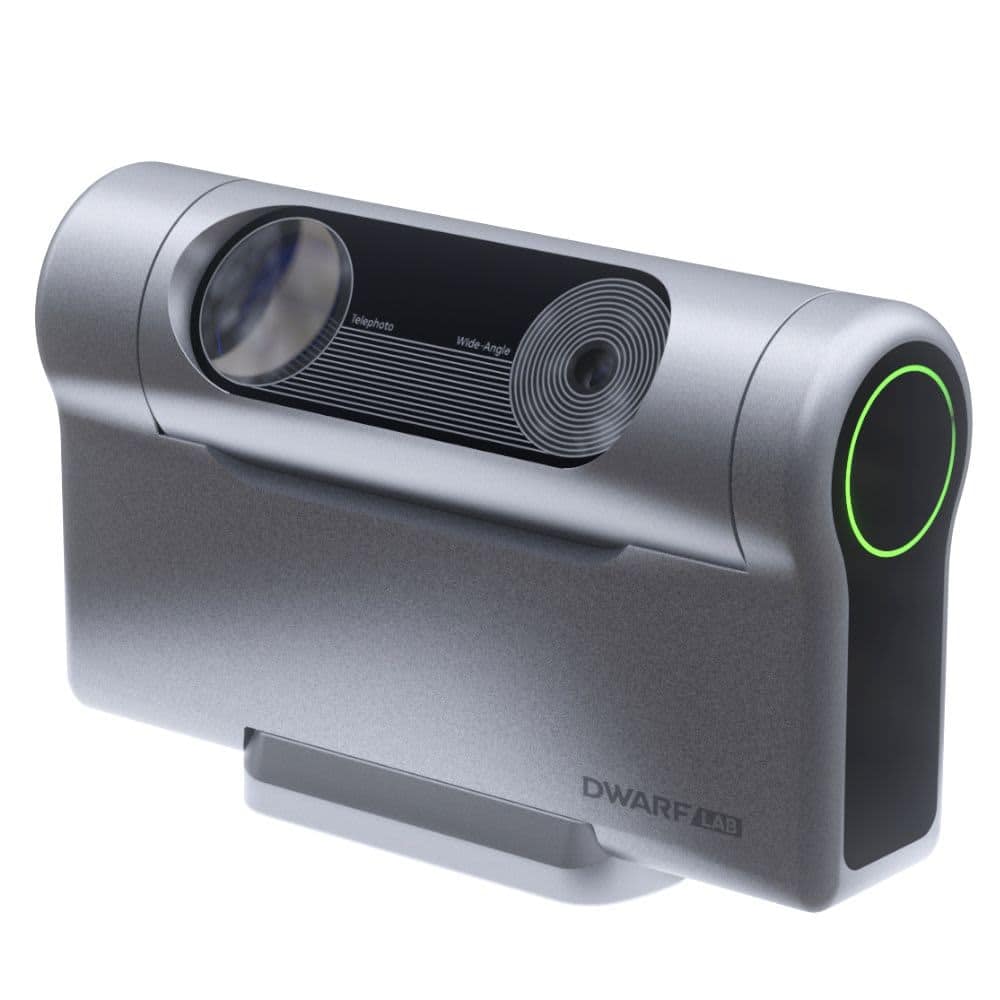

the dimension of both the Dwarf 2 and 3 are not the same
Thanks. Will update 🙂